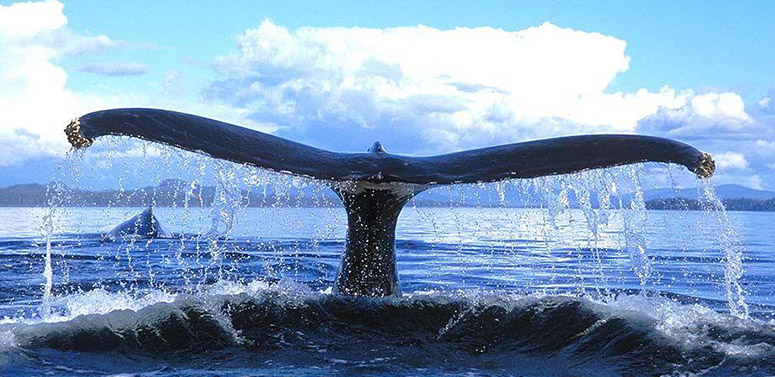Last month, NOAA's Greater Farallones National Marine Sanctuary advised boaters along the north-central California coast, especially in the San Francisco Bay Area, to steer clear of whales migrating through the area in large numbers from winter through late spring.

Boaters and water recreationists should use caution around whales year-round, but springtime presents a greater chance of coming into contact with whales. From March through May, around 19,000 migrating gray whales make their return migration north from Mexican breeding grounds to feed in Arctic waters off Alaska. Many travel through the busy shipping lanes off San Francisco’s Golden Gate, in the Greater Farallones marine sanctuary.
While they also migrate south through the sanctuary in winter, gray whales—including mothers with newborn calves—swim closest to shore in spring. Cow-calf pairs can be seen from headlands and coastal cliffs. They may pause in the surf zone and small bays for the calf to rest and nurse, and to avoid attack by killer whales. Calves are totally dependent on their mothers at this time.
Boaters should watch for the gray whale’s blow—its exhalation—which looks like a puff of smoke about 10 to 15 feet high, since very little of the whale is visible at the surface. A whale may surface and blow several times before a prolonged dive, typically lasting three to six minutes.
Federal guidelines advise that boaters should avoid:
• Approaching within 300 feet (the length of a football field) of any whale
• Cutting across a whale’s path
• Making sudden speed or directional changes
• Getting between a whale cow and her calf (if separated from its mother, a calf may be doomed to starvation)
Each year, thousands of ships and smaller vessels pass through the Golden Gate. Even small-craft collisions with a whale can have disastrous results, for whale and vessel, and sometimes the boaters. All whales are protected by the Marine Mammal Protection Act. Other local species, such as humpback and blue whales, are additionally protected by the Endangered Species Act.

